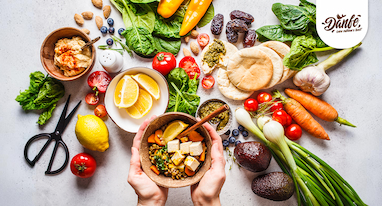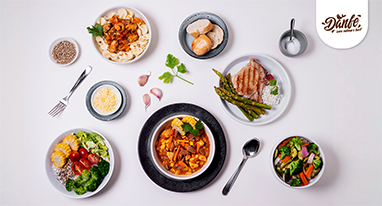Navratri Special Recipes – Delicious And Nutritious
BY DANFE |
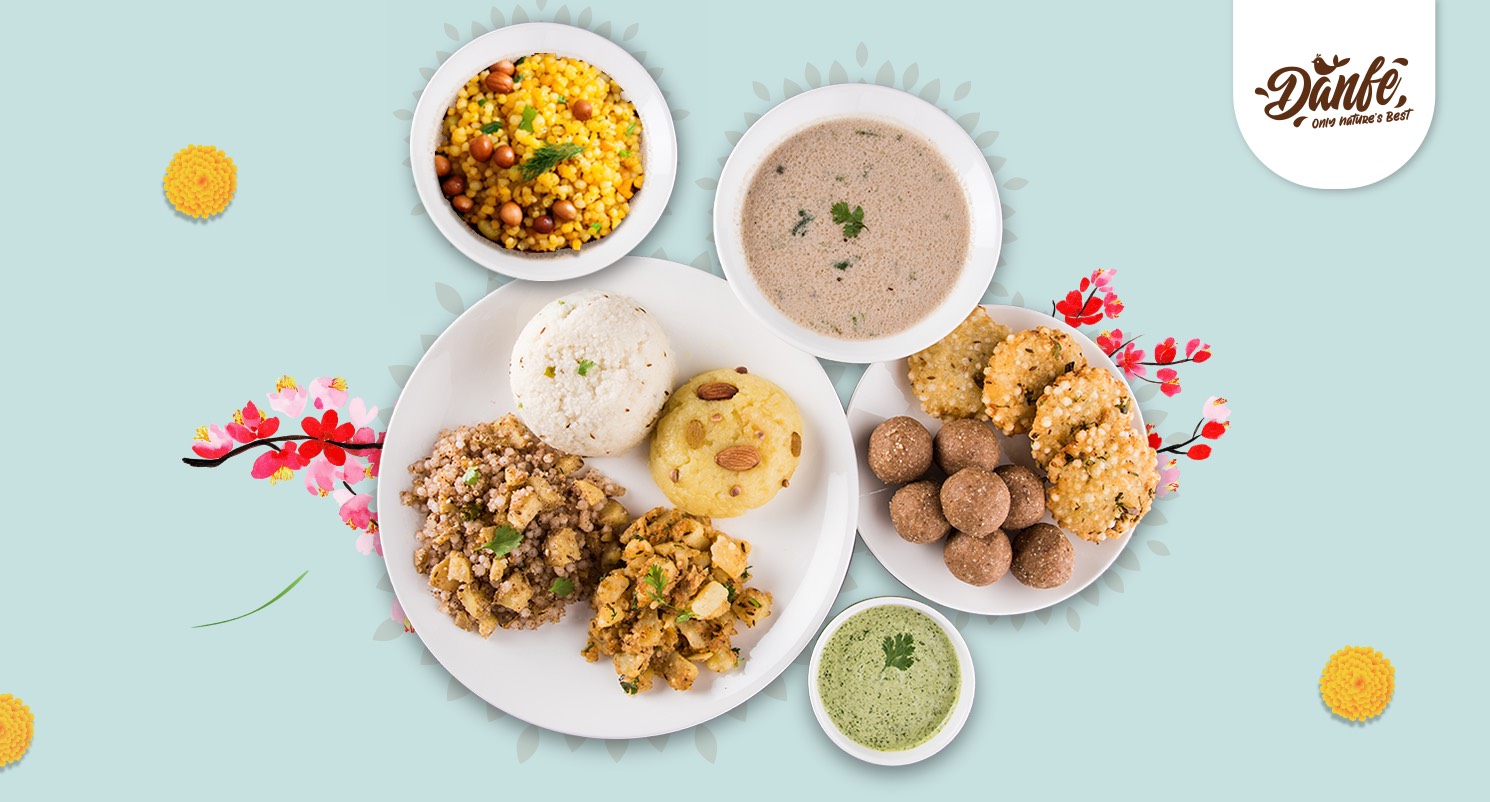
Navratri is a lively festival celebrated all over India to honor the divine energy of Goddess Durga. This festival of nine nights includes fasting, prayers, and cultural activities, making it a time for spiritual reflection and creative cooking. Sharad Navratri starts on October 3 and ends on October 12, 2024. The word “Navratri” means “nine nights” (nava + ratri).
This festival is celebrated in many ways across the Indian subcontinent, with each region having its unique traditions. There are also four types of Navratri, which vary with the seasons. Sharada Navratri, which takes place after the monsoon, is the most significant and grand of them all.
In the United States, Navratri is celebrated with enthusiasm, especially in areas with large Indian communities. Festivities often include cultural events such as Garba and Dandiya dances, where people dress in traditional attire and enjoy music and dance together. Many communities organize prayer meetings and food festivals, offering a variety of vegetarian dishes. The celebration serves as a way for people to connect with their heritage and share their traditions with others.
If you’re observing the fast, you may want Navratri special recipes that are both tasty and healthy, fitting the common dietary rules and boosting your energy for this time. Here are some nutritious Navratri recipes that are not only delicious but also perfect for maintaining your stamina during the fast. These Navratri special recipes are designed to provide flavor while keeping you energized. Explore a range of nutritious Navratri recipes to enjoy during the festive season!
Sabudana Khichdi
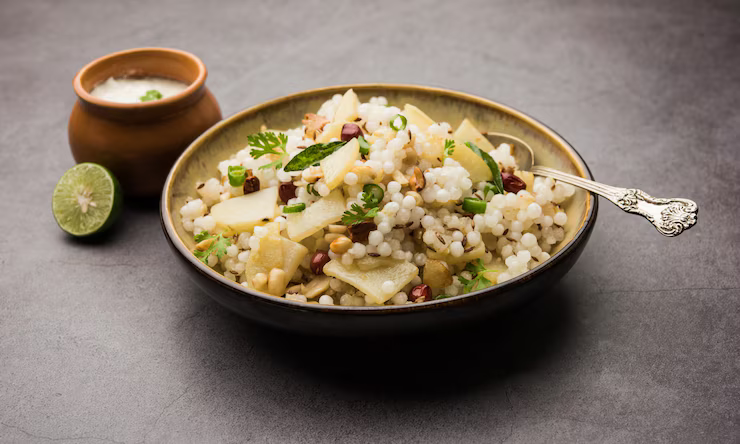
If there’s one dish that is essential during the fasting season, it has to be Sabudana Khichdi. Made with sabudana, boiled potatoes, roasted peanuts, and a few spices, this recipe is very popular. Many people have their ways of preparing it, but here, we bring you the recipe for making the perfect, non-sticky Navratri special recipe in Maharashtrian style. This Sabudana Khichdi is a favorite among nutritious Navratri recipes due to its simplicity and energy-boosting qualities. Whether you’re new to fasting dishes or looking for inspiration, this Navratri special recipe will surely be a hit. Packed with wholesome ingredients, it stands out as one of the most nutritious Navratri recipes you can enjoy during the festive season.
Ingredients
- 1 cup sabudana (sago or tapioca pearls) – about 150 grams
- Water (as required, to soak sabudana)
- 2 medium-sized potatoes
- ½ cup peanuts (roasted)
- 8 to 10 curry leaves (optional)
- 1 teaspoon grated ginger (optional)
- 1 green chili (chopped, or ½ to 1 teaspoon)
- 1 teaspoon Danfe Jeera
- ¼ cup fresh grated coconut (optional)
- ½ to 1 teaspoon Danfe Sugar (or as required)
- ½ to 1 teaspoon lemon juice (optional, or as required)
- 3 tablespoons peanut oil or ghee
- Rock salt (sendha namak, as required)
- 1 to 2 tablespoons chopped coriander leaves (optional, for garnish)
Instructions
- Rinse and soak sabudana in water overnight or for 3 to 5 hours. If hard after soaking, add water and soak for another 30 minutes. Drain and set aside.
- Cook Potatoes and Peanuts: Boil, peel, and chop the potatoes. Dry roast the peanuts until browned, then coarsely grind them.
- In a bowl, mix soaked sabudana with powdered peanuts, rock salt, and Danfe Sugar. In a pan, heat peanut oil or ghee, fry Danfe Jeera until crackling, and add curry leaves and green chilies (if using). Sauté ginger (if using), then add chopped potatoes and sauté for a minute. Stir in the sabudana mixture and cook on low heat for 3 to 5 minutes until translucent.
- Turn off the heat, and mix in lemon juice and coriander leaves. Garnish with extra coriander and lemon juice. Serve hot with sweetened curd or coconut chutney.
Kuttu Ki Khichdi

Kuttu ki Khichadi is a quick and easy Navratri special recipe that’s both nutritious and delicious. Made with buckwheat groats, potatoes, peanuts, and spices, it’s a healthy dish perfect for fasting days. This khichdi is also one of the most popular nutritious Navratri recipes, offering a balance of flavor and energy. Whether you’re observing the fast or simply looking for a wholesome meal, this Navratri special recipe fits the bill. Its simple ingredients make it one of the best nutritious Navratri recipes for maintaining energy during the festive season.
Ingredients
- 2 tablespoons raw peanuts
- 1 tablespoon ghee or peanut oil
- ½ teaspoon Danfe Jeera
- 1 green chili (chopped) or 1 teaspoon chopped green chili
- ½ inch ginger (finely chopped)
- 2 medium-sized potatoes (chopped into small cubes)
- 1 cup buckwheat groats (kuttu)
- 2 cups water (or as needed)
- 1 teaspoon Danfe Sugar
- Rock salt (sendha namak, to taste)
- 1 to 2 tablespoons chopped coriander leaves
- Lemon juice (optional, to taste)
Instructions
- Roast peanuts in a pan until golden. Cool and grind into a powder.
- Rinse the buckwheat groats and set aside.
- Heat ghee or oil in a pan, add Danfe Jeera until they crackle, then add green chili and ginger.
- Add chopped potatoes and cook for 2 to 3 minutes until slightly crispy. Stir in ground peanuts.
- Add rinsed buckwheat, water, Danfe Sugar, and Rock salt (Sendha Namak). Mix well.
- Cover and cook on low heat until water is absorbed and buckwheat is soft. Add more water if needed.
- Stir in coriander leaves and serve hot with lemon juice if desired.
Samak Rice Pulao
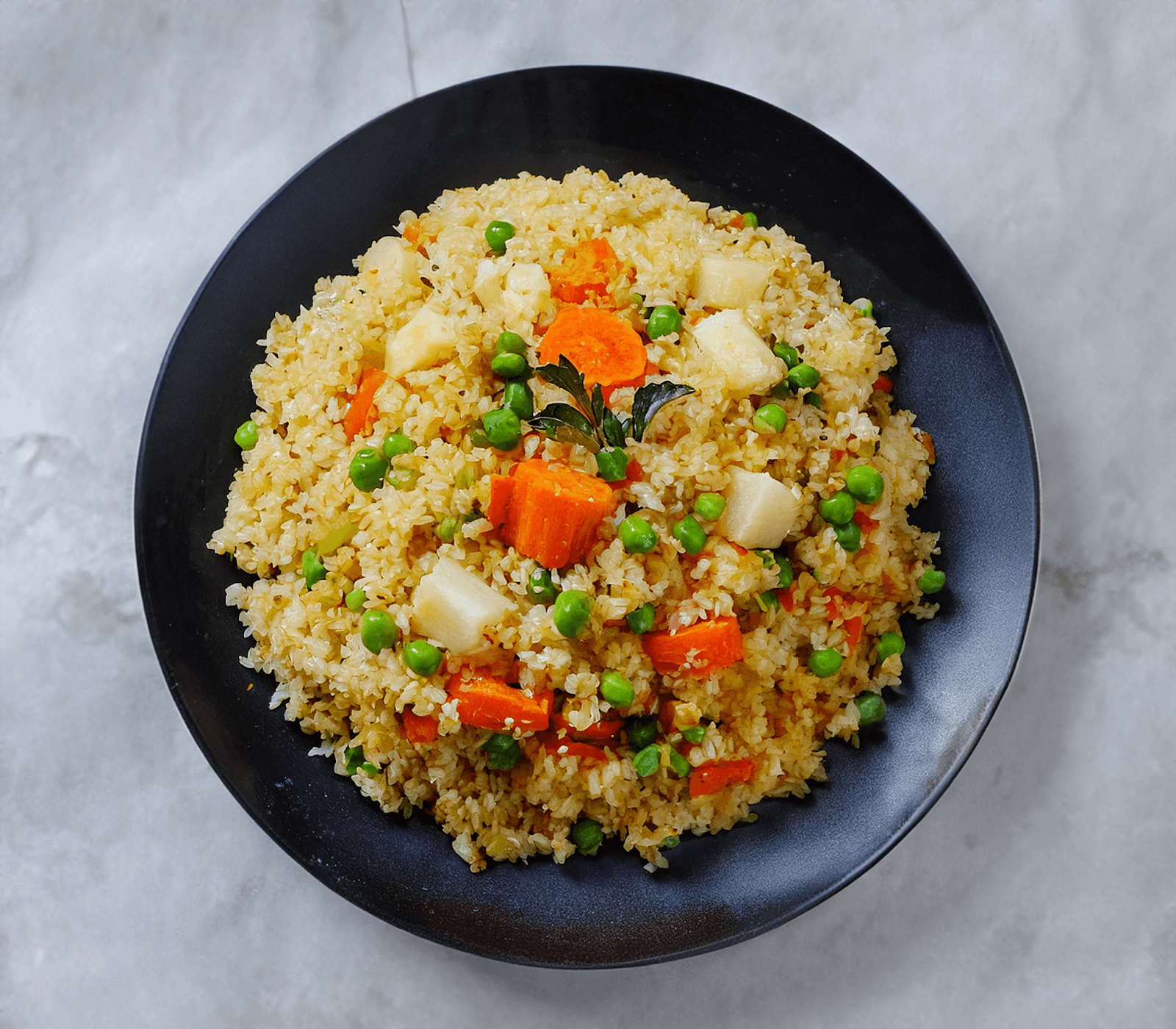
Samak, also called sama, samvat, samo, or barnyard millet, is a seed, not rice. It’s a popular ingredient in dishes made for Hindu fasting days in India. This Navratri special recipe of Samak Rice (also known as Sama ke Chawal ka Pulao or Vrat ke Chawal ka Pulao) is often cooked during fasting times like Navratri and Ekadashi. As one of the most versatile nutritious Navratri recipes, it is made without onion, garlic, or gluten, making it a perfect option for those observing fasts. Whether you’re fasting or not, this Navratri special recipe is both light and filling, showcasing why Samak Rice is a staple in many nutritious Navratri recipes.
Ingredients
- 1 cup samak rice (barnyard millet)
- Water (for soaking)
- 1-inch ginger (peeled and roughly chopped)
- 1 green chili (roughly chopped)
- 2 tablespoons peanuts
- 2 tablespoons ghee or oil
- 1 teaspoo Danfe Jeera
- ½ inch cinnamon stick
- 2 to 3 cloves
- 2 green cardamoms
- 3 to 4 black peppercorns
- 8 to 10 curry leaves
- 1 tablespoon chopped coriander leaves
- 2 medium-sized potatoes (peeled and cubed)
- 2.5 to 3 cups water (or as needed)
- Rock salt (Sendha Namak) (to taste)
- 1 tablespoon chopped coriander leaves
- 8 to 10 cashews
- 8 to 10 sliced almonds
- Lemon juice or lemon wedges (optional)
Instructions
- Rinse and soak samak rice in water for 20–30 minutes. Drain and set aside.
- Dry roast peanuts until crunchy, then coarsely grind. Crush ginger and green chili into a paste.
- Heat ghee or oil in a pressure cooker. Add cumin, cinnamon, cloves, cardamom, and peppercorns. Fry until fragrant.
- Add the ginger-green chili paste and sauté for half a minute.
- Stir in cubed potatoes, curry leaves, and coriander. Sauté for 3–4 minutes.
- Mix in peanut powder, then add the soaked rice. Stir well.
- Add water and Rock salt (Sendha Namak). Pressure cook for 4–5 whistles or until rice is cooked.
- Roast cashews and almonds while cooking.
- Serve the pulao garnished with nuts and coriander. Drizzle with lemon juice or serve with wedges.
Singhare Ki Poori
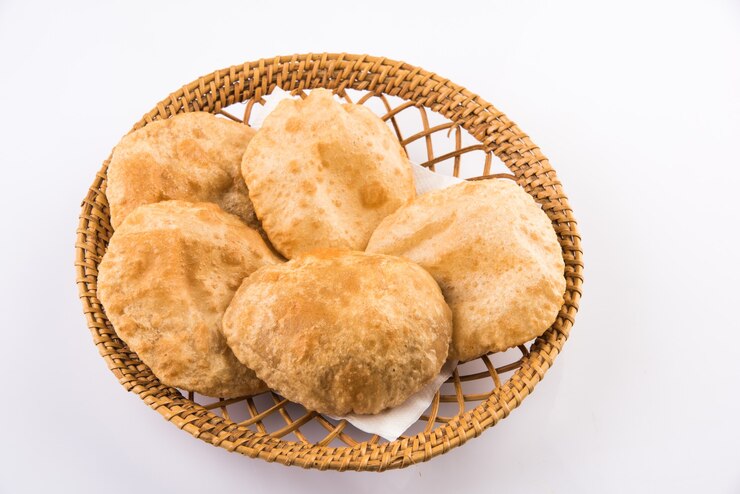
Singhare ki Poori is a tasty Indian fried bread made with water chestnut flour, mashed potatoes, edible rock salt (Sendha Namak), and some spices. These Pooris are often prepared as a Navratri special recipe during Hindu fasting days like Shivratri, Ekadashi, or Navratri. As one of the most popular nutritious Navratri recipes, Singhare ki Poori is light yet filling, perfect for sustaining energy throughout the day. In North India, only specific flours are used on fasting days, and this dish fits perfectly as a Navratri special recipe for anyone seeking flavorful yet nutritious Navratri recipes during the festive season.
Ingredients
- 2.5 to 3 cups singhare ka atta (water chestnut flour)
- 1 cup mashed potatoes (from 2 medium-sized boiled potatoes)
- 1 or 2 green chilies (minced)
- 1 teaspoon Danfe Jeera
- 2 teaspoons oil (plus more for frying)
- Rock salt (Sendha Namak) (as required)
- Water (to bind the dough)
- Oil (for deep frying)
Instructions
- Rinse potatoes, and pressure cook with water and a pinch of Rock salt (Sendha Namak) for 3–4 whistles until soft. Let pressure drop, then peel and mash.
- In a bowl, combine mashed potatoes, singhare ka atta, minced chilies, cumin powder, Rock salt (Sendha Namak), and oil. Mix well, adding 1–2 tablespoons of water as needed to form a smooth, pliable dough.
- Take small balls from the dough, sprinkle flour on the rolling surface, and roll into small or medium-sized puris.
- Heat oil in a kadai. Once hot, gently place the puris in the oil. Fry until they puff up and turn golden on both sides. Remove and drain on paper towels.
- Enjoy hot with vrat ke aloo or kaddu ki sabji.
Vrat Ki Kadhi
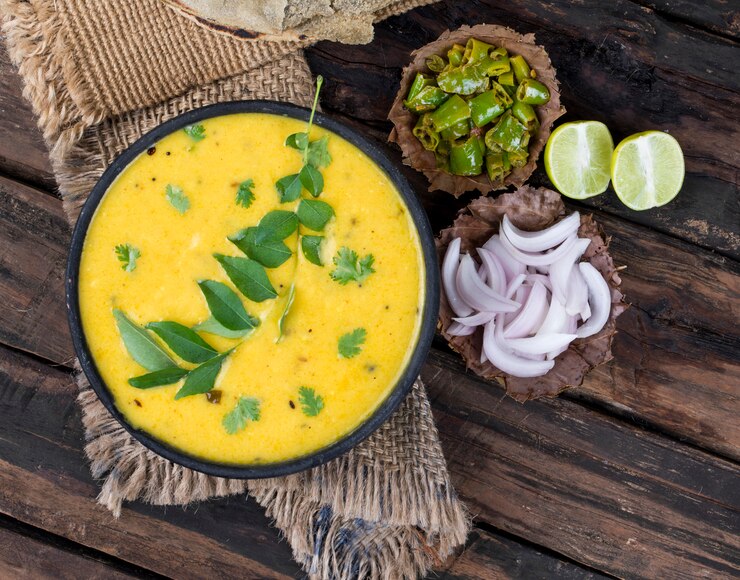
This kadhi recipe is a quick and simple Navratri special recipe, taking about 15 minutes to prepare. Amaranth flour is used in place of the gram flour typically found in regular kadhis. As one of the nutritious Navratri recipes, it offers a light and satisfying meal for fasting days. If you don’t have Rajgira flour, you can substitute it with other fasting flours like water chestnut flour (singhare ka atta), buckwheat flour (kuttu ka atta), or arrowroot flour, making it versatile and perfect for any Navratri special recipe collection. This is a great example of how nutritious Navratri recipes can be both easy and delicious.
Ingredients
- 1 cup full-fat fresh curd (yogurt) at room temperature (240 to 250 grams)
- 3 tablespoons amaranth flour (rajgira atta)
- ½ teaspoon Danfe Jeera
- 1 to 1.5 teaspoons ginger-green chili paste (or ½ inch ginger + 1 to 2 green chilies, crushed)
- ½ cup water
- ¼ to ½ teaspoon Danfe Sugar (or to taste)
- 2 tablespoons ghee or peanut oil
- 1 to 2 tablespoons chopped coriander leaves (for garnish)
- Rock salt (Sendha Namak) (as required)
Instructions
- Whisk the curd until smooth. Add amaranth flour and ½ cup water, mixing well to remove lumps.
- In a pan, heat 2 tablespoons of ghee or peanut oil. Add Danfe Jeera and sauté until fragrant.
- Stir in ginger-green chili paste and sauté until the raw aroma fades.
- Lower the flame, add the curd mixture, and season with Rock salt (Sendha Namak) and Danfe Danfe Sugar Stir and simmer until thickened, stirring occasionally.
- Garnish with chopped coriander leaves and serve hot with sama pulao, sama khichdi, or parathas.
Navratri is a time not only for prayer and reflection but also for celebrating delicious food traditions. The recipes shared in this blog, from the popular Sabudana Khichadi to the tasty Vrat Ki Kadhi, highlight the variety and nutrition that can be enjoyed during fasting. Each dish is made to give you energy and nourishment while letting you enjoy the wonderful flavors of the season.


